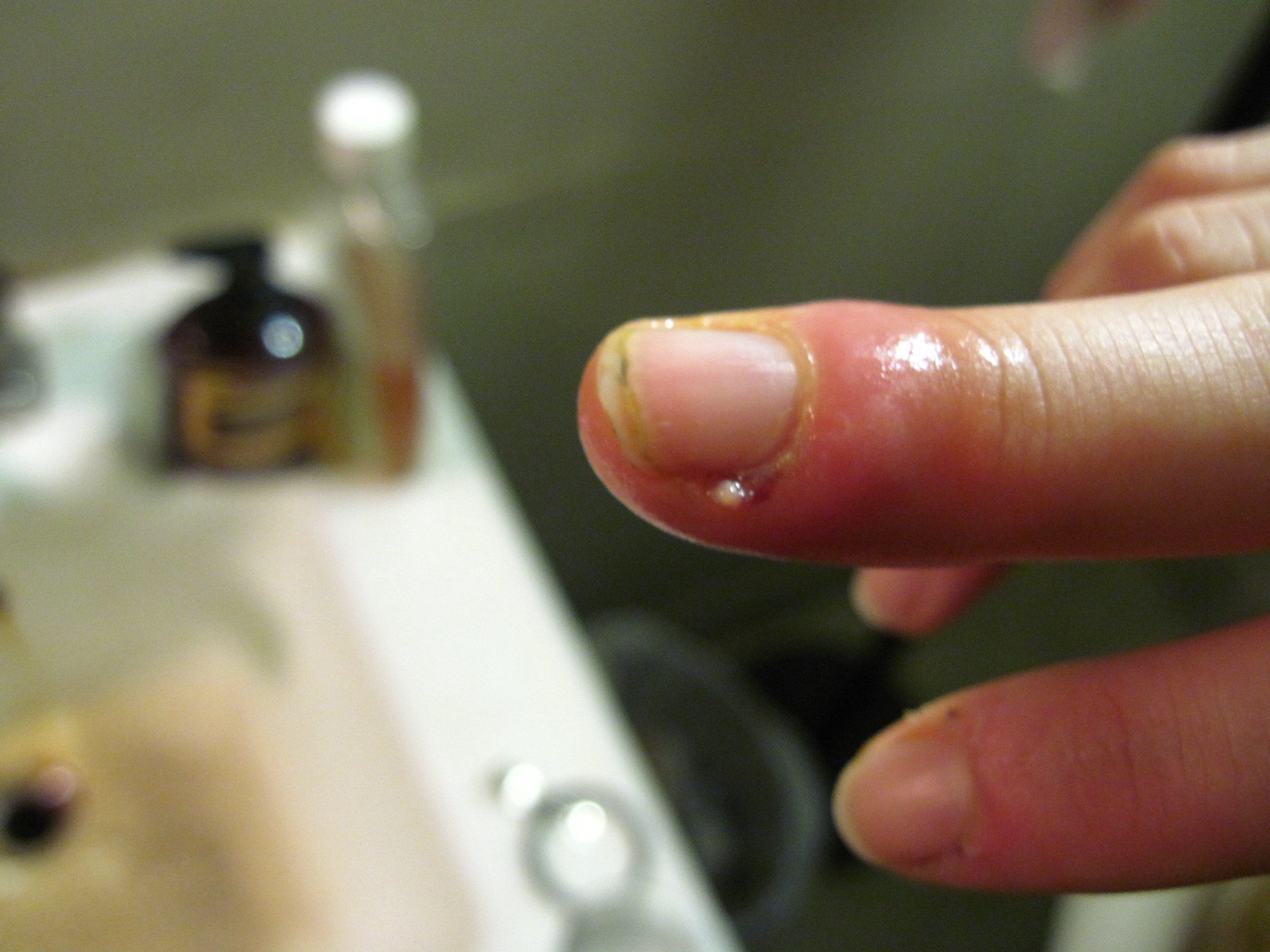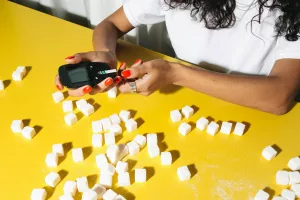Paronychia, more commonly known as cuticle inflammation, affects the tissue surrounding fingernails or toenails. It often results from bacterial or fungal infections triggered by minor injuries to the nail area. Symptoms include redness, swelling, pain, and in severe cases, pus formation. Having treated numerous nail infections in clinical settings, I can attest that early intervention leads to quick recovery. However, complications arise when individuals ignore symptoms or self-treat by cutting the skin or popping the infection at home. This article explores practical ways to manage and prevent paronychia effectively.
Understanding Paronychia: Types and Causes
Paronychia can be divided into two main categories: acute and chronic. Recognizing these distinctions is crucial for appropriate treatment and prevention.
Acute Paronychia
Acute paronychia typically results from a bacterial infection, often due to staphylococcal bacteria, following a sudden injury or trauma to the nail area. This can be as simple as a hangnail or a cut from improper nail clipping. Symptoms appear rapidly, usually within 48 hours, and include intense pain, redness, and swelling. Pus formation is common if the infection progresses.
Common Triggers and Microbes
- Nail Biting and Hangnails: Biting nails or picking at hangnails can introduce bacteria, especially Staphylococcus aureus, into the skin.
- Manicure Injuries: A nick during a manicure may lead to infection.
- Everyday Minor Cuts: Simple cuts from cooking or gardening can escalate to acute paronychia.
Chronic Paronychia
Chronic paronychia is often linked to fungal infections and develops slowly over weeks or months. It primarily affects individuals who frequently have their hands in water or are exposed to irritants, such as bartenders, dishwashers, or healthcare workers. Symptoms are generally milder than acute paronychia, including persistent swelling, redness, and tenderness.
Causes and Common Scenarios
- Repeated Wetting and Drying: This can damage the nail fold and lead to yeast colonization, typically by Candida.
- Occupational Hazards: Jobs involving frequent hand washing or contact with irritants increase risk.
- Skin Conditions: Those with eczema or psoriasis around the hands are more susceptible.
A Brief Anatomy Lesson
The cuticle, or eponychium, is the delicate seal where the skin meets the nail plate. Its primary function is to block pathogens from entering the nail fold and matrix. Aggressive cutting or pushing of this seal, as well as dryness-induced splitting, can provide an entry point for bacteria and yeast.
Symptoms to Watch Out For
Paronychia symptoms vary but typically develop within two to five days after the initial trauma.
- Painful Swelling: This is often the first sign, indicating inflammation.
- Redness and Tenderness: The affected area becomes red and sensitive.
- Pus Formation: In severe cases, pus may accumulate, suggesting an abscess.
- Warmth and Throbbing Pain: The area feels warm and throbs, especially under pressure.
- Chronic Cases: Look for cuticle loss, nail ridges, or partial nail lifting.
If symptoms extend beyond the nail area, or if fever, chills, or streaks up the finger occur, seek professional help immediately.
Home Treatment and Prevention
Many cases of paronychia can be managed with careful home treatment. Here’s a step-by-step guide to addressing the condition early:
Basic Care Steps
- Clean the Area: Wash the affected nail with soap and water to remove bacteria and debris.
- Warm Water Soaks: Soak the nail in warm water mixed with Epsom salts or a mild antiseptic for 10–15 minutes, 3–4 times a day, to relieve pain and promote drainage.
- Protect with Bandages: Use a sterile bandage to cover the area, protecting it from further irritation.
- Avoid Manipulation: Refrain from picking or biting the nail or cuticle.
Dos and Don’ts of Home Care
- Do: Elevate the hand to reduce throbbing, especially at night. For toes, wear open-toed shoes to avoid pressure.
- Do Not: Avoid cutting the skin or attempting to pop an abscess, which can exacerbate the infection.
- Avoid: Repeated use of hydrogen peroxide or full-strength alcohol, as these can delay healing.
Alternative Remedies
Some individuals find relief using alternative remedies, though they should be approached with caution:
- Apple Cider Vinegar: Known for its antiseptic properties, a diluted soak can help cleanse the area. Mix one part vinegar with two parts water.
- Tea Tree Oil: With antifungal and antibacterial properties, apply a diluted solution to the affected area twice daily.
Practical Example
Consider a case where a chef, who frequently works with their hands, develops acute paronychia due to a hangnail. By applying these home care techniques, the chef can manage the infection effectively, preventing it from escalating into a more severe condition.
When to Seek Medical Attention
While home treatments often suffice, certain conditions necessitate medical intervention:
- Persistent or Worsening Symptoms: If symptoms do not improve after a few days, consult a healthcare provider.
- Severe Pain or Swelling: Significant discomfort may require professional evaluation.
- Abscess Formation: A doctor might need to perform an incision and drainage procedure.
- Underlying Health Issues: Individuals with diabetes or on immunosuppressive drugs should seek prompt medical attention.
Professional Medical Treatments
When home remedies aren’t enough, medical treatments may include:
Incision and Drainage
For abscesses, a healthcare professional may need to drain the pus to relieve pressure and accelerate healing. This procedure involves numbing the area, making a small incision, and draining the abscess. Post-procedure, warm soaks are recommended to ensure continued drainage.
Antibiotics
- Mild Cases: Often managed without oral antibiotics, using topical treatments.
- Severe or Spreading Infections: Oral antibiotics may be prescribed, especially for high-risk patients like those with diabetes.
Chronic Paronychia Treatments
For chronic cases, treatment focuses on reducing irritation and yeast colonization:
- Topical Steroids and Antifungals: A combination of a low-potency steroid and an antifungal cream applied once or twice daily.
- Moisture Control: Use cotton liners under gloves for wet tasks and apply emollients after washing.
Ingrown Toenails and Paronychia
For toe paronychia, addressing ingrown toenails is crucial:
- Initial Care: Soak the foot in warm water, gently lift the nail edge, and wear spacious footwear.
- Persistent Issues: A podiatrist may perform a partial nail removal to prevent recurrence.
Personal Insight
From my experience, ingrown toenails often exacerbate toe paronychia, especially in those who wear restrictive footwear. Proper nail trimming techniques and wearing comfortable shoes can significantly reduce the risk.
Follow-up and Recovery
After professional treatment, recovery timelines vary:
- Acute Cases: Expect improvement within a week.
- Chronic Cases: May take weeks to resolve, requiring consistent management.
Prevention Strategies
Preventing paronychia involves maintaining good nail hygiene and protecting the cuticles:
- Regular Trimming: Keep nails trimmed but not excessively short to avoid tears.
- Cuticle Care: Avoid cutting cuticles; instead, gently push them back and moisturize.
- Use Gloves: When handling chemicals or submerged in water, wear protective gloves.
- Sterilize Tools: Ensure manicure tools are sterilized to prevent infection.
Additional Prevention Tips
- Moisturize Regularly: Keep a moisturizer near every sink to ensure consistent use.
- Avoid Harsh Chemicals: Use barrier creams to protect the skin from irritants.
Real-World Application
A healthcare worker constantly washing hands can implement these strategies by using barrier creams and moisturizing after every wash, substantially reducing the risk of chronic paronychia.
Common Mistakes to Avoid
To effectively manage and prevent paronychia, steer clear of these common mistakes:
- Over-Cutting Cuticles: This can open the door to infections.
- Ignoring Symptoms: Early intervention is key to preventing severe cases.
- DIY Treatment: Avoid home lancing or excessive use of irritants like peroxide.
Exploring Alternative Therapies
While not replacements for conventional treatments, some alternative therapies may support healing:
- Herbal Remedies: Calendula ointment may reduce inflammation and promote healing.
- Nutritional Support: A diet rich in vitamins A, C, and E can support skin health.
Differentiating Paronychia from Other Conditions
Accurate diagnosis is crucial, as treatment varies widely:
- Herpetic Whitlow: Characterized by clear vesicles on the finger, requiring antiviral treatment.
- Felon: A deep infection in the fingertip pad that demands urgent care.
Understanding and treating paronychia requires both knowledge and vigilance. By implementing effective prevention strategies and recognizing when to seek professional help, you can manage this common condition and protect your nail health.




